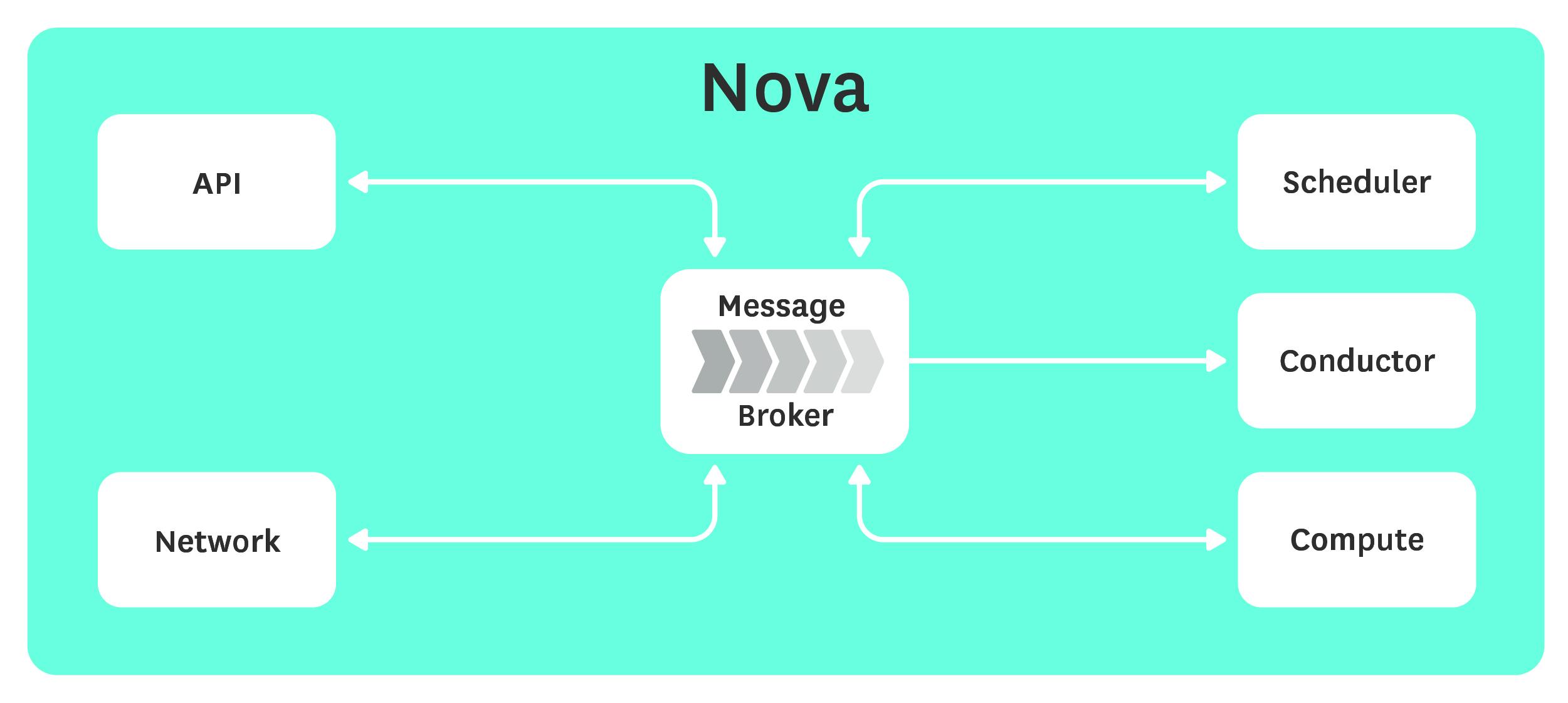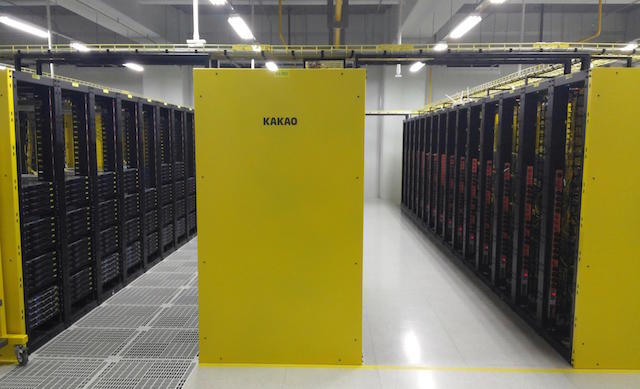오픈 스택의 Nova는 가상 머신 라이프 사이클 관리자로서, 아마존 EC2와 동일한 역할을 한다. https://github.com/openstack/nova
(초창기에는 Nova가 오픈스택의 전부였다고 한다....)
즉 서버 가상화를 수행할 수 있다.
초기의 Nova는 오픈 스택의 핵심이었다고 한다. Nova가 서버, 네트워크, 볼륨을 모두 관리하다가 Nova 볼륨은 Cinder로 Nova 네트워크는 Neutron으로 프로젝트가 분리되었다.
데이터독의 Nova 아키텍처는 간단하다.

이미지 출처 : https://datadog-prod.imgix.net/img/blog/openstack-monitoring-nova/nova-high-level-3.png?fit=max
좀 더 좋은 이미지를 살펴봤다. 예전 오픈 스택에는 다음과 같은 아키텍처 그림이 있었다고 하나. 지금은 오픈 스택 싸이트에서는 보이지 않는다.
내부는 RabbitMQ를 사용하고 있다.

이미지 출처 : http://cloudn1n3.blogspot.kr/2014/11/openstack-series-part-4-nova-compute.html
공식문서(openstack.org)의 아키텍처는 다음과 같다.
- DB: 데이터 저장용
- API: HTTP 요청을 받고 커맨드를 변환해 oslo.messaging 큐 또는 HTTP로 다른 컴포넌트와 통신한다.
- Scheduler: 인스턴스를 실행한다.
- Network: ip 포워딩, 브릿지, vlan을 관리한다.
- Compute: 하이퍼바이저와 가상 머신과의 통신을 관리한다.
- Conductor: 코디네이션(빌드/리사이즈)가 필요하다라는 요청을 처리한다. 마치 데이터베이스 프록시처럼 동작한다.
Nova를 설명한 쉬운 자료.
Nova에 대한 자세한 내용은 아래 슬라이드를 보니 도움이 된다.
Nova와 AMQP와의 연동 방법, 인스턴스가 만들어질 때까지의 동작 순서를 설명한다.
'Cloud' 카테고리의 다른 글
| 처음 본 오픈스택 Swift (0) | 2017.07.24 |
|---|---|
| 처음 본 오픈 스택 Glance (0) | 2017.07.21 |
| [펌] 공개된 카카오 오픈 스택 관련 공개 및 강의 자료 (0) | 2017.07.20 |
| 처음 본 오픈 스택의 Cinder (0) | 2017.07.18 |
| 처음 본 Kolla (0) | 2017.07.17 |





